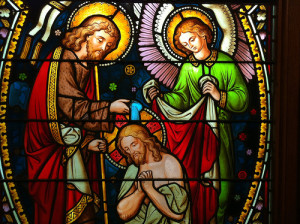 In our study of Mark we’ve seen six demonic altercations in the first seven chapters. What’s going on here? Is this what ministry should look like today? Should our seminaries offer exorcism classes? Should pastors devote equal time to preaching, counseling, visitation and demon wrangling? If not, why not?
In our study of Mark we’ve seen six demonic altercations in the first seven chapters. What’s going on here? Is this what ministry should look like today? Should our seminaries offer exorcism classes? Should pastors devote equal time to preaching, counseling, visitation and demon wrangling? If not, why not?
Here are three considerations to keep in mind as we think about demons:
- Biblically, direct demonic altercations are uniquely concentrated in the gospels and acts. You don’t see them nearly as much in the Old Testament or New Testament epistles. They seem to have escalated during Jesus’ incarnation and the early establishment of the church.
- Demonic power is spoken of differently in the epistles. In the gospels, demonic influences tend to be acute, taking over specific people in extreme degrees. In the epistles, demonic influences are treated as chronic, affecting everyone in a more comprehensive way through the world system apart from Christ (Ephesians 2:1-3; 6:1-20). So while there certainly are still incidents of acute demonic oppression and even possession, it is not the regular situation of most ministry contexts.
- Jesus’ focus in the gospels is not on the demons, but the cross. He could have set up a successful exorcism shop in any town and done a lot of helpful work. But instead he left many in their struggle with demons on his way to die for their sins. Since Jesus did not focus on demons, neither should we.
So as we study Mark, with all these stories of acute demonic altercations, we grow in our belief that Jesus is the Christ, the Son of God, and by believing, we gain eternal life and freedom from the pervasive demonic influences around us (John 20:30-31; Ephesians 2:4-7).







